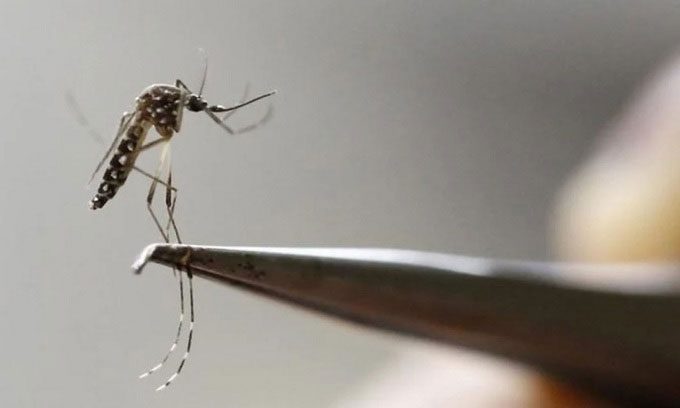Researchers have made a breakthrough in controlling the population of Aedes aegypti, the mosquito species responsible for transmitting dengue fever, yellow fever, and Zika virus.
A study published in the Proceedings of the National Academy of Sciences (PNAS) reports the first results using the CRISPR/Cas9 gene-editing technique targeting a specific gene related to reproduction in male mosquitoes. The researchers found that this mutation could inhibit reproduction in female mosquitoes.
Montell and colleagues are working to improve a pest control method known as Sterile Insect Technique (SIT). To manage the population, the research team breeds a large number of sterile male insects. They then release these males in overwhelming numbers compared to wild males. The females will mate with the sterile males and become infertile, thereby reducing the number of the next generation. Repeating this technique several times has the potential to eradicate the population. Additionally, as each generation has fewer individuals than the previous one, releasing a similar number of males will be more effective over time.

Aedes aegypti is a dangerous disease vector. (Photo: Reuters).
SIT has proven effective in managing various agricultural pest species, including the Mediterranean fruit fly, a serious pest in California. This method has also been tested on Aedes aegypti mosquitoes originating from Africa, which have become invasive in many parts of the world due to climate change and global trade.
In the past, scientists used chemicals or radiation to sterilize male A. aegypti mosquitoes. “There are enough genes that can impact reproduction instead of irradiating a large number of genes that make male mosquitoes infertile,” said Craig Montell, a professor of Molecular, Cellular, and Developmental Biology at the University of California, Santa Barbara. However, chemicals or radiation can adversely affect the health of the insects, resulting in poorer mating success with females, thereby reducing the effectiveness of SIT.
Montell believes that a targeted approach could be used with less overall harm. He and his colleagues, including Jieyan Chen and Junjie Luo, decided to mutate a gene in mosquitoes to sterilize males without affecting their health. They found that the best option was the b2-tubulin gene (B2t).
Using CRISPR/Cas9 gene-editing technology, the research team disabled the B2t gene in male Aedes aegypti. They discovered that males carrying the mutated gene did not produce sperm but remained completely healthy. In one experiment, the researchers introduced 15 mutated male mosquitoes into a group of 15 female mosquitoes for 24 hours.
Afterward, they replaced the gene-edited B2t mosquitoes with 15 wild males and observed the group. According to Montell, all the female mosquitoes remained infertile. The results confirmed that the mutated male mosquitoes could inhibit reproduction in female mosquitoes.
Next, the research team aimed to determine the role of time in achieving effectiveness. They allowed female mosquitoes to interact with mutated males for varying lengths of time.
The researchers found no significant differences after 30 minutes, but the reproductive capacity of the females decreased rapidly with longer exposure. Female mosquitoes mated on average twice even within the first 10 minutes. This suggests that females need to mate with multiple sterile males to become infertile. Pairing females with gene-edited B2t males for 4 hours resulted in a 20% reduction in reproductive rates compared to normal.
With insights from their experiments, the research team sought to apply SIT in more natural conditions. They simultaneously released mutated and wild male mosquitoes in different ratios into a group of 15 females over a week, recording the females’ reproductive rates. With a ratio of 1 wild male to 5-6 sterile males, the reproductive rate of the females was halved. When the ratio of wild to sterile males was 1/15, the female reproductive rate decreased by approximately 20%.
Currently, Aedes aegypti populations can easily rebound if reproductive rates are reduced by 80%. Success comes from consecutive releases of sterile mosquitoes, with each subsequent release being more effective than the last due to the increasing proportion of sterile males in the population. Montell plans to continue investigating the mating and reproductive behaviors of mosquitoes to discover new ways to suppress mosquito populations.




















































